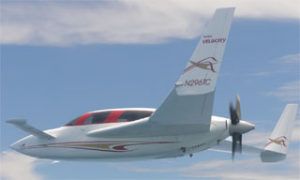 Aircraft designers who want their creations to go fast have a couple of basic paths to follow: reduce drag or increase horsepower. When you’re working with an existing design-with the hard structural and aerodynamic work done and paid for-the decisions become easier to make. Slimming the profile is difficult, and every incremental reduction in drag comes at an increasingly higher price-the knot-per-dollar ratio changes for the worse with each clever drag-reducing detail. And, depending upon the airplanes specific mission, certain avenues are blocked anyway. Reduce tail volume or wing area and pay the price in stability or utility.
Aircraft designers who want their creations to go fast have a couple of basic paths to follow: reduce drag or increase horsepower. When you’re working with an existing design-with the hard structural and aerodynamic work done and paid for-the decisions become easier to make. Slimming the profile is difficult, and every incremental reduction in drag comes at an increasingly higher price-the knot-per-dollar ratio changes for the worse with each clever drag-reducing detail. And, depending upon the airplanes specific mission, certain avenues are blocked anyway. Reduce tail volume or wing area and pay the price in stability or utility.
The other route: more power. Historically this has come from a larger engine. But as the Velocity already packed a Continental IO-550 behind the firewall, the options here-short of, say, hanging a Pratt & Whitney R-985 back there-are limited. Moreover, as any aerodynamicist will tell you, dramatically increasing sea-level horsepower wont dramatically increase sea-level speed.
No surprise, then, to find the latest development of the popular Velocity canard four- or five-seater comes via a pair of Garrett turbochargers. While the sea-level power is the same as the normally aspirated IO-550s-310 horsepower-the twin turbos help maintain this power well into the Flight Levels. Performance, predictably, follows suit. From a claimed 205-knot cruise for the non-turbo version, the TXL is said to cook along at 250 knots true at Flight Level 250.
Back to the Future
Unquestionably the Velocity is the fruit of Burt Rutan that has not fallen far from the tree. More directly, the Velocity traces its roots to Danny Maher, who adapted the Long-EZ design into a four-placer back in 1984. The trademarks remain-forward canard, swept wing, tipsails as vertical stabilizers and rudders (and, as with the Rutan designs, the rudders swing outward only)-but the details have changed tremendously since the early days, as well see.
Onetime Velocity builders, the father and son team of Duane and Scott Swing, eventually bought Maher out in 1992 and have continued to develop the Velocity. The design literally grew from the original Velocity, with a larger wing and canard, substantially greater interior volume, progressively brawnier engines, fully retractable gear, gull-wing doors and myriad improvements to the way the design is kitted. Today, the lineup consists of the SE, meant to carry 160- to 200-hp four-cylinder engines; the XL, which is a foot longer, has more canard and wingspan, and is meant to hoist engines from 260 to 310 hp; the XL-5 variant, which employs structural modifications to the central keel to create three-kids-abreast seating in Row 2 but is otherwise similar to the XL; and the TXL turbo model. Moreover, any of these versions can be built as fixed tricycle gear or fully retracting models.
The Dash-5 Equation
As you’d expect, the airplane we flew was the Full Monty, an XL-5, retractable-gear variant with the turbo Continental chuffing away out back. The XL-5 option package includes a revised interior structure that employs a carbon-fiber wrap on a truncated center keel section that would normally run fore and aft between the rear seats. With this hump thus removed, a bench rear seat can be fitted, though the turbo demonstrator had two sumptuously upholstered buckets back there.
Moreover, the XL-5 package includes heavy-duty brakes-that were effective in stopping the Velocity but about as numb as a lip full of Novocain-and additional baggage space. One way to get more cubby room inside the cabin is to build the fuel tanks a certain way. As is customary in the Rutan designs, fuel is carried in leading-edge strakes near the fuselage. Standard fuel capacity is 70 gallons, but the inside bulkhead can be moved inward to accommodate up to 93. Together with stronger gear legs, the Dash-5 upgrade permits a maximum gross weight of 2900 pounds, 100 more than the straight XL and a whopping 600 more than the base SE.
It’ll Huff, and It’ll Puff…
Velocity has taken what many will feel is the smart route with the engine installation and ordered what is essentially an off-the-shelf package from Continental. The TSIO-550-C uses the more powerful crossflow cylinder heads, twin turbochargers and intercoolers. The primary modification made by Velocity is to turn the turbo outlet pipes around so they face backwards toward the prop.
Whats more, this is a relatively understressed version of the big Continental, limited to 35.5 inches of manifold pressure for takeoff. These same cylinders, on a different spec engine, are asked to produce 350 hp. The engines 7.5:1 compression ratio means that it sacrifices some fuel efficiency to the non-turbo 550, but with the fuel injectors properly balanced, this engine is capable and contented to run lean-of-peak EGTs to help win back some of that lost efficiency.
For cooling, a composite plenum is fed by two large NACA ducts on top of the rear fuselage. The intercoolers share the cooling-air flow, and there are smaller pickoffs to help cool accessories. Those circular outlets straddling the prop are supplemented by a pilot-adjustable cowl flap below the spinner on the centerline. Its refreshing to see a kit manufacturer come to the conclusion that a high-performance turbo engine has widely different cooling needs from takeoff to cruise to high-speed descent, and put that control in the hands of the pilot.
The Rest of the Beast
Current Velocity kits are what could be described as hybrids, part traditional Rutan and part thoroughly modern construction. In the standard kit, the fuselage arrives as two halves, split horizontally. The fuselage, tipsails and the inboard strakes are vacuum-bagged, foam-core glass. The main wing and canard spars are premolded with the hardpoints installed. But the wings, canard, ailerons and elevator travel in the UPS truck as precut and indexed blue foam. True, this is a long way down the road from big blocks of foam, templates and hot-wire cutting, but there’s still a lot of “raw” glassing to be done.
There’s a fix, and its called quickbuild options. At Velocity, the fast-build kits give you completed wings, winglets, canard, with the ailerons and elevator premolded and finished through primer. A fast-build fuselage option-modular in the sense that you can combine quickbuild subkits with the standard kit-sees the factory join the fuselage halves permanently, install all internal bulkheads, and fit the doors, side windows and blank instrument panel.
Costs are $11,500 for the wings and $7700 for the fuselage. As someone who has worked with glass-though not much with raw foam-it seems to me the costs are far outweighed by the benefits, which include better quality on critical components like the wing shape and alignment, reduced build time (by an estimated 800 hours) and dramatically reduced finishing effort.
Get In, Lets Go
The TXLs prime mission is clear: big-time cross-country flying. In a nutshell, while it’s an entertaining airplane to fly, it’s not optimized for banging around the pattern. So we set out for a long (ish) shakedown that would take me, company pilot John Abraham and Velocity techie Ken Baker to altitude for some airwork and then down to San Diego to pick up photographer Richard VanderMeulen. (Who, at about 6-foot-13, would make an excellent guinea pig to test back-seat room and comfort.)
Passengers can hop in through either gull-wing door and slide behind the front seats with ease. There’s plenty of leg and shoulder room up front, and sufficient headroom. The windshield seems close, with dramatic A pillars that help form the few visual pitch references. (No worse than your first few minutes in a twin-engine aircraft and easily learned.) Those slit-like side windows are distinctive and also easily accommodated after a bit of time.
Start-up is conventional Continental; with the whir and thrum well behind the cabin. The composite-skinned four-blade MT propeller doesn’t have a lot of inertia, so the engine accelerates briskly. Its also relatively small, so you need a bit more throttle than youd think to get the TXL off the chocks; as with the view out the windshield, the experience is distinctly jet like.
Ground steering is by differential braking, with the aforementioned feedback-free brakes and stiff pedals conspiring with a tight nosegear caster to make a jerky affair. Later, Abraham did better, so chalk it up to pilot error.
Initial acceleration seems slightly underwhelming given the horsepower, almost certainly because the canard design cant spin a huge prop, but, according to my digital recorder, we hit 60 knots indicated in 11 seconds and rotation speed of 70 knots 3 seconds later. I estimate ground roll through the intended rotation point of about 1500 feet. Velocity lists the takeoff distance as 1300 feet, which might be possible with a full brakes-on, maximum-effort lunge.According to the company, an accomplished Velocity pilot should be comfortable with a 2500-foot strip. Your mileage may vary.
Prior to takeoff, you’ll set the elevator trim by outside reference to elevator displacement, incremented in “fingers.” The heavier the airplane and the further forward the loaded cg, the more fingers you should be able to get between the canard top and the outboard end of the elevator. Our evaluation flight started at approximately 150 pounds under the maximum gross weight. For my first takeoff, we misjudged the trim setting, so that after the power came smoothly up, the TXL began accelerating, and the target rotation speed of around 70 knots had come and gone; it required a big pull to rotate the nose. This pull, estimated at around 15 pounds, largely thwarted my attempts at smoothness and resulted in a post-rotation wing rocking. A few quick flicks of the electric pitch trim settled the airplane and relieved the control pressure, and its sure that pilots familiar with the airplane can better estimate the trim starting point. Get the gear stowed by 125 knots, and you’re good to go to the Flight Levels.
Getting Out of Town
Cleaned up and climbing, the TXL does extremely well. At 32 inches, 2600 rpm and 110 KIAS, the demonstrator was climbing at 1300 fpm. Pitched over to 125 KIAS for better visibility and cooling, the rate of climb diminished to 1100 fpm, still quite respectable. With turbocharging as your best friend during higher-than-standard temperatures, this climb rate can easily be maintained into oxygen altitudes. Flattening the climb at 135 KIAS, we still could maintain 1000 fpm through 10,000 feet.
No question, the Velocity, particularly at this weight and loading, is a trim-intensive airplane. Get it set, and its resolutely stable in pitch. In roll, the responses are much faster and the control forces much lighter than in pitch. Its this characteristic-which would technically be called a lack of harmony, though that sounds harsher than its meant to be-that takes the most acclimatization by transitioning pilots. Baker pointed out that most pilots with high-performance time learn to adapt to the Velocity in about 20 landings. He also pointed out that the bottom “feelers” on the tipsails are not structural and can be replaced without damaging the rest of the airplane.
We continued our climb into thin air to see just how quick the TXL really is. Leveled off at 16,500 feet at a typical cruise setting of 27 inches/2500 rpm and trimmed to a mixture lean of peak EGT resulting in 14.0 gph, we saw 223 knots true according to the Grand Rapids EFIS. A two-way speed run watching the GPS groundspeed disclosed an average of 210 knots. Even with the instrument/static-system errors, thats a heady number at this fuel flow, which pens out to around 63% power. Extrapolating up to FL250, assuming the traditional 2% per 1000 feet of TAS increase, the company’s claims of 250 KTAS are certainly reasonable at a higher power setting. In cruise, properly trimmed, the airplane is a delight. With speed, the roll forces increase and become more in line with pitch; and the airplanes strong pitch stability-it begins an instant, strong return to trimmed airspeed from a pitch displacement either above or below the trimmed flight path-and high stick force per G proved confidence inspiring.
There are more reasons than fuel efficiency to run this engine lean of peak. During our climb, the center two cylinders on each side exceeded 400 F, and would stay there during lean-of-peak cruise. The outboards were at or under 380 F, so some fine-tuning of the plenum system might be in order. Heres another example of the challenges inherent in developing a happy turbo-engine package, as many others before Velocity have discovered. Even so, this installation is, overall, very well done, with good power control, superior smoothness and generally good manners.
Oh the Places You Will Go
One benefit of high cruise speed and comparatively low fuel burn is range. On a typical mission into the low teens, where oxygen demands aren’t as critical, the Velocity turbo will consume around 10 gallons for takeoff and climb to altitude, leaving between 4.5 and 5 hours endurance with reserve on the full 93-gallon tanks. Thats longer than most people want to sit in one place, though its definitely a nicely appointed, comfortable place. (Even the back seat, closer to the oily, noisy bits, is still fairly serene, with an unobtrusive rumble underpinning a fair bit of wind whistle.) And, even with that fuel load, the cabin could still carry around 560 pounds of people and stuff. Thats not quite four full-size adults and baggage, but enough for a family of four not heading for an NBA championship game.
Eventually, though, someone will have to use the restroom, or you’ll reach your destination, and it’ll be time to come down. Because the Velocity cruises so fast, one must take care to respect the 200 KIAS Vne. Pull some power off, go to the rich side of peak to put some heat back into the cylinders, and down you come. Once slowed and brought into the airport environment, the pilots workload picks up. You’ll need to trim off quite a bit of power to reach the 125-KIAS gear speed; there are no other drag devices to help you besides the prop and throttle. As with the takeoff and initial climb, the Velocity is trim intensive, but absolutely stays where you put it. The greatest challenge for the transitioning pilot is managing the control pressure difference between pitch and roll; the aileron forces lighten while the surfaces remain quite authoritative.
And, like all canards, the landing is nothing like a nose-high, full-stall affair. The Velocity wants to be brought over the runway at a modest nose-high pitch attitude, with the pilot doing as little as possible with the ailerons to keep the wings level, and allowed to plop down at a constant pitch attitude. Descent rate is controlled mainly by power. I don’t fly canards enough, so my first landings always, well…do what a Hoover does; but they become good with practice.
Cash or Check?
A Velocity SE starts at $31,950, with the XL going for $42,950. From there, add fast-build options if you like ($11,500 for the wings; $7700 for the fuselage), retractable gear for $8500 and then budget $2900 for the XL-5 options. Powerplant choices will impact the bottom line. If you’re building an XL or XL-5, the opening gambit for a new engine is the Continental IO-550-C, at $51,950 with a three-year warranty. The Lycoming IO-540 (10 fewer hp) goes for $57,400 with a one-year warranty. (Used versions of the Lycoming are far more plentiful than the Continental, but other IO-520/550 variants probably could be made to fit. To get the turbo, prepare to spend $89,900, but that comes with all the turbo hardware and a three-year warranty. MT props run $9500 for the three-blade and $10,200 for the quad-paddle item. Add in paint, interior, avionics-like the superb dual-GRT setup on the demonstrator aircraft-plus the inevitable miscellany, and you’ll have left $200,000 in your wake.
Adding speed and capability always costs more money, but it can pay back in surprising ways. Velocitys tactic of strapping on a comparatively easygoing turbo engine to a familiar, proven airframe provides not just extra speed but tremendous capability-to jump over and around weather, and climb to smooth, cool air-all without altering the XL-5s personality or diminishing its cant-stall safety margins.
Velocity TXL
Base kit price (excluding quickbuild options) $54,350
Estimated completed price $120,000 – $220,000
+-9Estimated build time 1800 hours
Number flying (at press time) 25
Powerplant Continental TSIO-550-C, 310 hp @ 2600 rpm
Propeller MT, four-blade constant-speed
Powerplant options Continental IO-550, Lycoming IO-540
Airframe
Wingspan 31 ft
Wing loading 20.0 lb/sq. ft
Fuel capacity 70 gal std (93 opt)
Maximum gross weight 2900 lb
Typical empty weight 1790 lb
Typical useful load 1100 lb
Full-fuel payload 691 lb
Seating capacity 4 -5
Cabin width 47.5 in
Baggage capacity 100 lb
Performance
Cruise speed 288 mph (250 kt) TAS
25,000 ft @ 75% of max-continuous, 17.5 gph
Maximum rate of climb 1600 fpm
Stall speed (clean)* 75 mph (65 kt) IAS
Takeoff distance 1300 ft
Landing distance 1500 ft

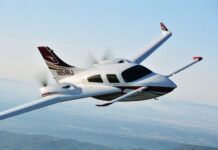
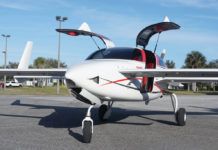
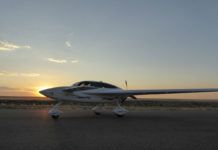
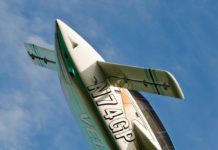
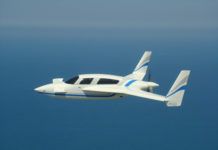
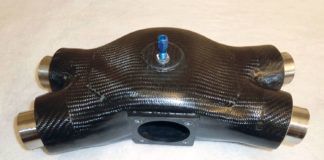

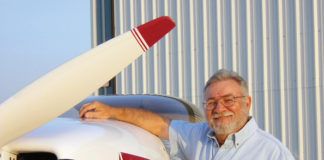
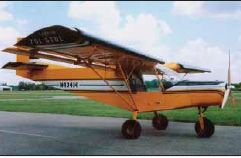
I recently learned of this aircraft. I’m not a pilot yet, but am about to start flight school. I need a plane I can take you and down the West Coast. My question is would it be possible to convert this to use an automotive twin turbo V6. (Specifically a BMW s58)
Anything’s possible, Jeff. But it would be a huge undertaking, spanning from building a new engine mount to finding a suitable PSRU (prop speed reduction unit).